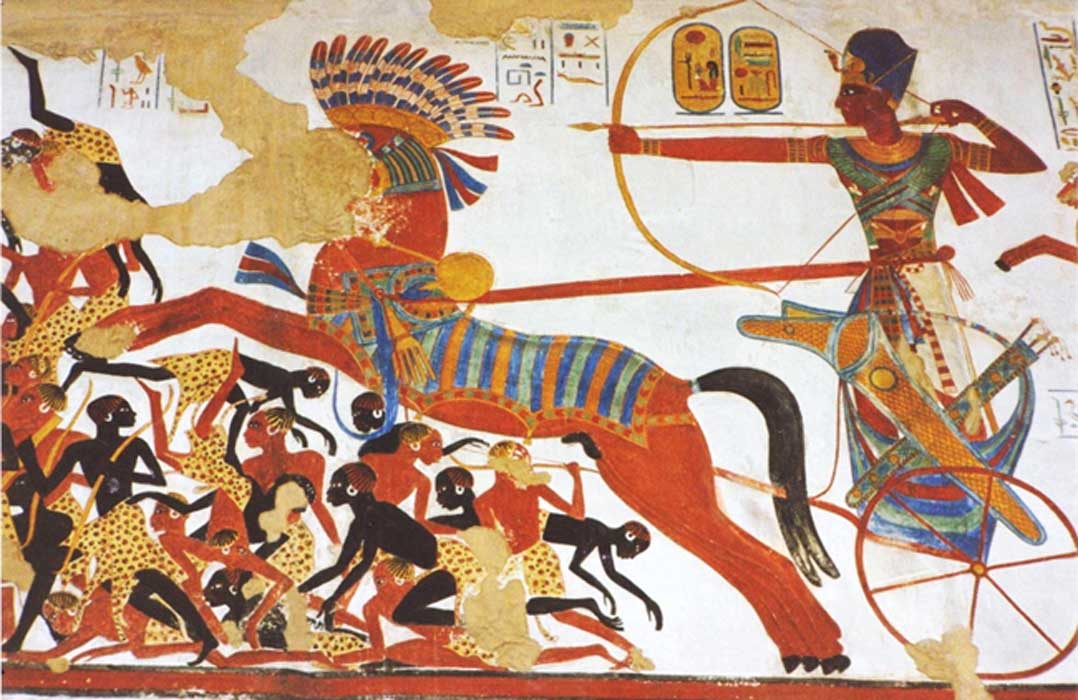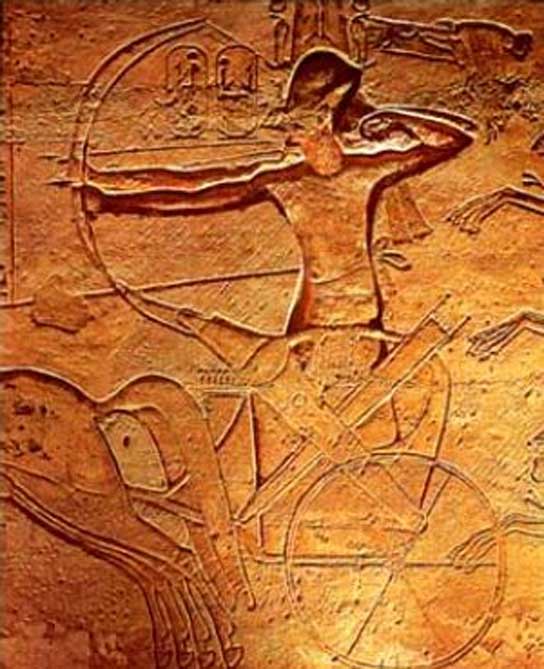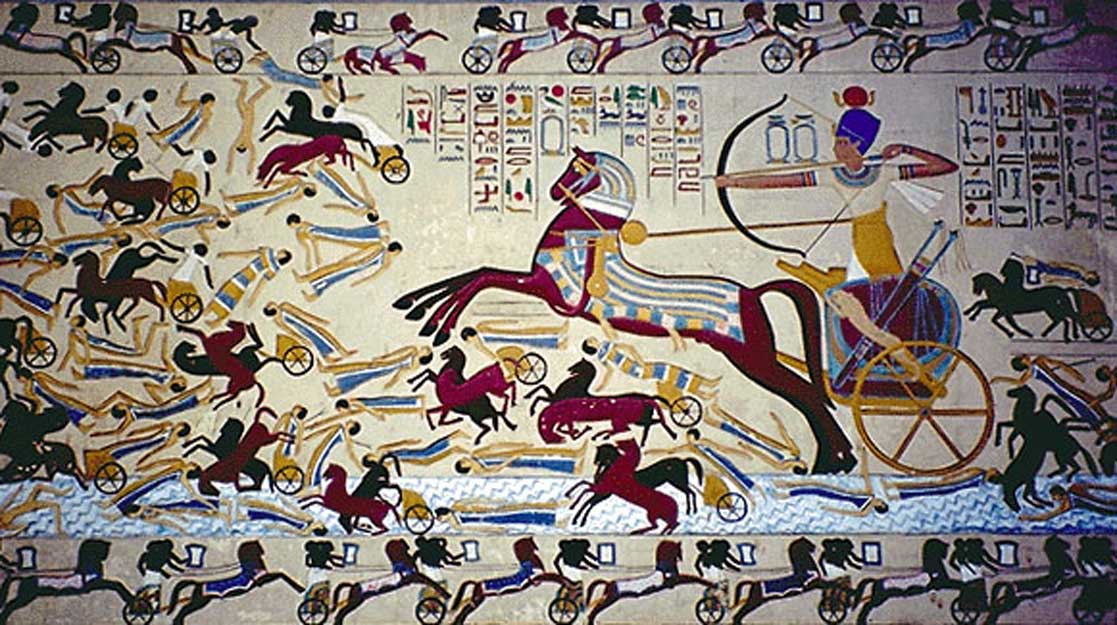
Blood and Victory: The Battle of Kadesh, a Clash of Titans – Part II
The stage is set for a showdown between two giant armies – the Egyptians, with the greatest pharaoh of history, Ramses II, and the Hittites, with their impressive army and persuasive king, Muwatalli II. The bloody Battle of Kadesh would go down in history as the largest chariot battle ever fought!
The Egyptian Army and their Gods
The Egyptian army under Ramses II during the New Kingdom was a professional fighting force. The Egyptian army, like most, consisted of chariots, infantry, and archers. The Egyptians made sure that one man in ten was liable for military service. As for Egyptian units, they were named after their gods.
Each Egyptian division numbered 5,000 men subdivided into 250-man companies and 50-man platoons. The chariot, used by both the Egyptians and Hittites, was the tank of the ancient world and could not function properly upon the field of battle without infantry support. The Egyptian infantry provided the brunt of the main fighting body. The foot archers provided missile support. Chariots had a driver and an archer. Unlike a foot archer, the archer in chariot was mobile and had a 360-degree platform to fire from, just like the Hittite chariots. A difference between the two armies was that the Egypt was much more suited for open warfare, unlike their Hittite counterparts.

Ramses II at the Battle of Kadesh (relief at Abu Simbel) (Public Domain)
The size of the army Ramses led to Kadesh numbered 20,000, of which 16,000 were foot soldiers while the other 4,000 manned the chariots. There were two men to a chariot and the number of chariots the Egyptians brought to the battle was 2,000, requiring 4,000 horses, not to mention that additional horses and chariots were readily available. Unlike the Hittite chariots, which were built to taxi infantry around the battlefield, the Egyptian chariots were suited for speed and maneuverability. The Egyptians took the design of the Hyksos chariot and improved upon it by positioning the axle to the rear of the carrying platform, expanding the spokes in the wheel from four to six, and connecting the U-shaped joint to the yoke pole under the chariot was designed to slide left and right allowing the driver smooth rotation when on the move.

Hyksos chariot painting (Public Domain)
The Battle of Kadesh
After many days, Ramses led his army to Usermare-Meriamon, the city of cedar. From here, he proceeded northward and arrived at the highland of Kadesh. Ramses, like his father, crossed over the channel of the Orontes, with the first division of Amon named: "Victory-of-King-Usermare-Setepnere."




